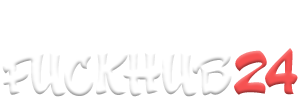October 25, 2025
Budget Lighting Setup for Better Video Calls (Under $60)
budget video call lighting men – quick guide for a clean face and calm shadows. You do not need an expensive ring. You need soft light at eye level, a steady color and a simple placement that works in small rooms. Follow this plan and your camera will look better in ten minutes without buying fancy gear.
Why soft light wins: a small bare bulb makes hard edges on your nose and under the eyes. When you spread light on a larger surface, shadows fade and skin looks even. That is what a diffuser does. A diffuser can be a sheet of printer paper, a thin cloth or the inside of a cheap umbrella. Light spreads – your face looks calmer. If you ever wondered why studio photos look smooth, it is the size of the light source, not a secret filter.

Color also matters. Our eyes adapt fast, but the camera is less forgiving. If one lamp is warm and one is cool, the camera fights to decide what white is. Skin turns orange or green. Pick one color and stick to it. Daylight around 5000 to 5600 K is simple and safe. When you shop, look for the word “daylight” or the number on the box. If your room has warm bulbs you love, use two warm bulbs instead – the key is to match them.
budget video call lighting men – what to buy under $60
- Two cheap lights or one ring light. Aim for 8 to 12 watts LED each. Look for 5000 to 5600 K and a high color score. If you cannot find specs, pick a “daylight” bulb.
- Simple diffuser. White printer paper or a thin cloth taped over the shade makes light soft. Never touch hot parts – keep space from the bulb.
- Clamp or small stand. You want the light a little above eye level and pointed at your face, not the wall. A basic clamp or mini stand is enough.
Glasses and shiny skin can reflect light back to the lens. To tame glasses, raise the key light slightly and point it a little to the side so the reflection bounces away from the camera. Powder or oil control wipes reduce hot spots on the forehead and nose. A matte background also helps the camera keep exposure stable.
Place and tune – three minute setup
- Key light at eye level. Put the brighter light a little to one side of the laptop camera. Tilt it so the shadow under your chin is soft.
- Fill light lower and softer. Place the second light on the other side, dimmer or farther away. If you only have one light, bounce light off a white wall.
- Match color. Use the same color for both lights. Daylight around 5600 K is safe. Avoid mixing warm and cool – skin goes weird.
- Kill back glare. Turn off bright lamps behind you. A simple back lamp is fine if it is dim and far from camera.
Small room trick: move the laptop a little closer to the wall and point the key light at the wall, not your face. The wall becomes a big soft source. This is the cheapest way to fake a studio look. If the wall color is strong, hang a white sheet or place a large white card where the light hits.
Keep it natural – quick fixes and habits
- Lower screen brightness. Your laptop screen makes a blue glow. Drop brightness so it does not fight your lights.
- Use the same scene every time. Put tape marks for lamp position. Repeatability beats guessing. If you change rooms, take a photo of your setup first.
- Privacy and comfort. Good light shows more detail. Review our data tracking guide to understand what your device may share and our secure platforms guide for camera and mic permissions.

Travel setup idea: a foldable clamp light, a warm and a daylight bulb and a sheet of paper can live in any backpack. In a hotel or dorm, clamp the light to a chair, bounce it off a wall and place the laptop at eye height on a stack of books. You now have a steady look in five minutes in any room.
Common mistakes and quick fixes: the light is too low – raise it to eye level. The face looks flat – move the key light to the side a bit. The camera hunts exposure – remove bright lamps behind you and keep the brightest thing near your face. The colors shift when you open a web page – reduce screen brightness and avoid bright white sites in the first seconds.
If you want a deeper dive on LED basics and color, read the plain guide from the U.S. Department of Energy at energy.gov. It explains why daylight bulbs around 5000 to 5600 K look clean on camera and why diffusers help.
Last thing – light helps, attitude sells. Be relaxed, speak a little slower than you think you should and look at the camera for the first sentence. For talk flow ideas check our private chat tips. Use these habits as your budget video call lighting men base and you will look better than most people who spend more.
